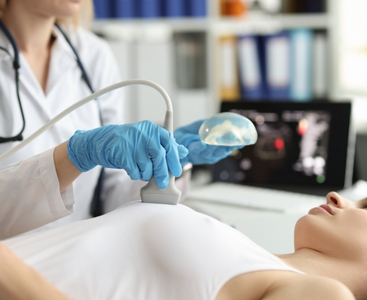REPLANTATION/REVASCULARIZATION
Replantation/Revascularization
Replantation and revascularization are surgical procedures performed for suturing areas that are either completely detached from the body or not completely separated from the body but do not have blood circulation. Amputation is a very common situation, especially in traffic or work accidents. For this reason, replantation and revascularization applications are frequently performed in hand surgery. When the broken parts are stored in the right conditions and they are not crushed, etc. If there is no excessive damage, it can be sewn into place in a healthy way. The biggest advantage of these applications is that if all conditions are ideal, the planted area preserves its movement and sensory abilities. The most commonly used surgical method in replantation and revascularization is microsurgery.
What is Replantation/Revascularization?
Replantation is a ground-breaking procedure in hand surgery, first performed in 1962. For the first time, Dr. Thanks to this procedure performed by Ronald Malt, the arm of a 12-year-old boy, which was severed from the humerus level, was succesfully sutured. From this practice until today, amputated limbs can be successfully joined to the body thanks to the developing medical treatments.
Revascularization applications, on the other hand, are the name given to the repair of limbs that are not completely amputated from the body, but where blood circulation is not provided. Both applications help the tissues that have lost their vitality to be joined successfully and to preserve the function of the limbs.
What are the Examination Findings for Replantation/Revascularization?
The parts that are completely detached from the body lose their natural skin color due to lack of blood circulation and their color is white. This also applies to parts that are not completely separated from the limb. At this point, special surgical microscopes can be used to examine the amputation status of the body part. This inspection is also important to understand the damage to the part. It may not always be possible to sew completely crushed pieces. Therefore, if there are other injuries beyond the separation line, it is necessary to detect them as well.
How Should Amputated Body Parts be Protected?
Amputation; It can occur in many areas such as fingers, hands, arms, legs, skin, penis or ears. The ischemia time of the ruptured parts is very important in the success of the operation. It is important that the parts brought to the hospital with the patient are stored under appropriate conditions. The broken part must first be washed with sterile water. Then it should be wrapped in gauze and placed in a waterproof bag. This bag can also be stored in a different bag containing ice. Whether the storage environment is too hot or too cold greatly affects the success of the process. It is very important that the broken piece is not in an environment that is cold enough to freeze. At the same time, direct contact with ice should be avoided.
How is Replantation/Revascularization Performed?
Microsurgery is generally used in replantation and revascularization applications. The biggest difference between microsurgery and traditional open surgery is; It is the use of special devices, similar to a microscope, during the procedure. These devices enlarge the region, allowing even the thinnest arterial structures to be seen in the region. Thus, it is possible to suture smaller than 1 mm and to repair vessels, tendons, nerves. All of these procedures are surgical procedures that take a long time and require patience and experience. For this reason, it must be done by a doctor who is experienced and expert in the field of microsurgery.
The most important factor affecting success in replantation and revascularization applications is how fast the intervention is performed. In order not to lose the vitality of the vein and nerve structures in the region, the broken pieces should be sutured as soon as possible.
What are the Indications for Replantation/Revascularization Surgery?
- Age: Replantation and revascularization surgeries can be performed at any age. There is no age restriction. However, some physiological characteristics that change with age may affect the success of surgery. In children, anastomosis may be difficult due to small vessel diameters. However, post-surgical anxiety and vasospasm are also more common in children.
- Condition of the Broken Part: At the beginning of the main variables that affect the success of this treatment, whether the integrity of the part is preserved or not. The chance of success is quite high in clean ruptures similar to the guillotine incision. However, the surgical process may be more difficult if there are local crushes, minimal distal and proximal injuries. The success of the surgery may also be adversely affected in cases of broken, injured or dirty parts as a result of traffic accidents.
- The Nature of the Broken Region: At the same time, the region of the broken piece is also effective. Very successful results can be obtained with replantation treatment in parts broken off from the humerus, elbow or proximal forearm. Since nerve healing is slow, treatment of ruptures in the shoulder region is more difficult. At the same time, the rate of return of the senses is satisfactory in replantation applications made from the wrist and lower level.
- Warm Ischemia: Muscles lose their vitality completely after being without blood for about 2-6 hours. If the ruptured parts are cooled to +4 degrees, ischemia can be delayed. If the ruptured part is the fingers that do not contain muscle tissue, the warm ischemia time is approximately 8 hours. This period can be increased up to 30 hours under the right storage conditions.
- Physiological Characteristics of the Patient: The patient’s condition may not be suitable for replantation due to trauma, especially in ruptures in accidents. At the same time, patients with a history of rheumatoid arthritis, diabetes, SLE and heart attack may not be able to replant due to both the risk of anesthesia and vascular problems.










